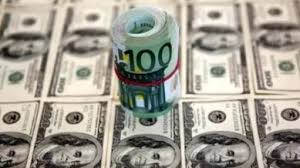
The U.S. economy experienced solid growth in the third quarter, supported by a significant increase in consumer spending and a notable surge in business investment, as shown in a recent report from the Commerce Department. This performance comes just days before the U.S. election on Nov. 5, where voters will choose between Vice President Kamala Harris, representing the Democratic Party, and former President Donald Trump. Economic issues remain a priority for many Americans as inflation cools, adding a fresh layer to pre-election discussions.
Consumer spending, which makes up over two-thirds of U.S. economic activity, grew at a robust 3.7% annual rate—the fastest rate since early 2021 and higher than the second quarter’s 2.8%. Analysts attribute this surge to solid household income levels, a resilient job market, and tempered inflation rates. "Solid GDP growth fueled by strong consumption and strong capital equipment spending, all accompanied by inflation sliding back toward 2%," noted Chris Low, chief economist at FHN Financial. The overall gross domestic product (GDP) rose by an annualized 2.8% in the third quarter, aligning with recent upward revisions in economic data and exceeding the Federal Reserve's estimated 1.8% non-inflationary growth rate.
Despite rising consumer confidence and reduced inflation, high living costs continue to affect Americans, especially in essentials like food and housing. However, with inflation nearing the Federal Reserve's 2% target, the central bank has shifted its monetary policy direction. In a recent move, the Federal Reserve implemented a half-percentage-point rate cut, bringing the policy rate down to the 4.75%-5.00% range. This adjustment is expected to ease borrowing conditions for businesses and consumers, offering a further boost to economic activity.
Business investments also showed significant momentum, with equipment spending rising at a robust 11.1% annual rate, the fastest pace since mid-2023. Government spending added to this growth, while the slowdown in inventory accumulation and a widening trade deficit slightly offset the GDP increase. The BEA's report on Hurricane Helene's impact indicated $39 billion in private asset losses and $2 billion in government-owned asset losses, although these didn’t significantly affect GDP calculations.
With steady wage growth, near-record low layoffs, and rising household net worth, many Americans are seeing improvements in their financial stability. Inflation has cooled, offering additional relief, especially for lower-income households. Excluding volatile food and energy prices, the personal consumption expenditures price index rose at a moderate 2.2% rate in the third quarter, down from the previous quarter's 2.8%. This cooling inflation trend has eased economic pressure on households and is providing a buffer against the challenges posed by high-interest rates.
The economy’s performance before the election offers a mixed yet hopeful outlook. Economic resilience, marked by consumer spending strength and significant business investments, continues to withstand the pressures of last year's aggressive rate hikes, totaling 5.25 percentage points in 2022 and 2023. Although Americans remain concerned about daily costs, these economic gains offer a positive backdrop as they prepare to cast their votes.
The Federal Reserve’s new stance on interest rates, coupled with strong economic data, could shape not only financial markets but also public sentiment in the days leading up to the election. As the race remains tight, the economy’s current resilience and the possible impact of lower borrowing costs add an interesting dynamic to the election, with both candidates addressing economic stability and growth in their campaigns.
(Source:www.usetoday.com)
Consumer spending, which makes up over two-thirds of U.S. economic activity, grew at a robust 3.7% annual rate—the fastest rate since early 2021 and higher than the second quarter’s 2.8%. Analysts attribute this surge to solid household income levels, a resilient job market, and tempered inflation rates. "Solid GDP growth fueled by strong consumption and strong capital equipment spending, all accompanied by inflation sliding back toward 2%," noted Chris Low, chief economist at FHN Financial. The overall gross domestic product (GDP) rose by an annualized 2.8% in the third quarter, aligning with recent upward revisions in economic data and exceeding the Federal Reserve's estimated 1.8% non-inflationary growth rate.
Despite rising consumer confidence and reduced inflation, high living costs continue to affect Americans, especially in essentials like food and housing. However, with inflation nearing the Federal Reserve's 2% target, the central bank has shifted its monetary policy direction. In a recent move, the Federal Reserve implemented a half-percentage-point rate cut, bringing the policy rate down to the 4.75%-5.00% range. This adjustment is expected to ease borrowing conditions for businesses and consumers, offering a further boost to economic activity.
Business investments also showed significant momentum, with equipment spending rising at a robust 11.1% annual rate, the fastest pace since mid-2023. Government spending added to this growth, while the slowdown in inventory accumulation and a widening trade deficit slightly offset the GDP increase. The BEA's report on Hurricane Helene's impact indicated $39 billion in private asset losses and $2 billion in government-owned asset losses, although these didn’t significantly affect GDP calculations.
With steady wage growth, near-record low layoffs, and rising household net worth, many Americans are seeing improvements in their financial stability. Inflation has cooled, offering additional relief, especially for lower-income households. Excluding volatile food and energy prices, the personal consumption expenditures price index rose at a moderate 2.2% rate in the third quarter, down from the previous quarter's 2.8%. This cooling inflation trend has eased economic pressure on households and is providing a buffer against the challenges posed by high-interest rates.
The economy’s performance before the election offers a mixed yet hopeful outlook. Economic resilience, marked by consumer spending strength and significant business investments, continues to withstand the pressures of last year's aggressive rate hikes, totaling 5.25 percentage points in 2022 and 2023. Although Americans remain concerned about daily costs, these economic gains offer a positive backdrop as they prepare to cast their votes.
The Federal Reserve’s new stance on interest rates, coupled with strong economic data, could shape not only financial markets but also public sentiment in the days leading up to the election. As the race remains tight, the economy’s current resilience and the possible impact of lower borrowing costs add an interesting dynamic to the election, with both candidates addressing economic stability and growth in their campaigns.
(Source:www.usetoday.com)














